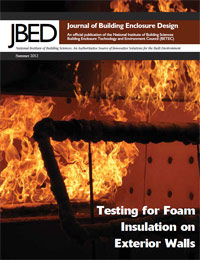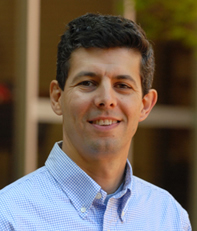Thursday, September 27, 2012: 6:00–7:30 pm
The Future of Building Materials: Passive Design Utilizing the Energy Storage Capability of Phase Change Materials
Vincent Blouin, Assistant Professor, School of Architecture / School of Material Sciences and Engineering, Clemson University
Where: Charleston County Main Library 68 Calhoun Street, Charleston, SC 29401( MAP )
Continuing Education Credit: AIA 1.5 LU:HSW:SD
SC LLR Bldg Codes Council 1.5 (pending approval)
Certificates provided upon request.
Download presentation Cost: FREE
Summary
Are phase change materials (PCMs) the future of building materials? Consider water. Its form or phase changes from solid to liquid to gas and back again as we add or remove heat from the material. At the freezing or boiling point, water, like other PCMs, can absorb or release large amounts of heat without changing its temperature. Some materials even undergo solid-solid phase changes, with similar heat effects, as their internal structures rearrange themselves at the molecular level.
So, what if we could carefully select phase change materials for their thermal characteristics and then add them to common building materials to improve human comfort and energy efficiency? As he shares his expertise on buildings and phase change materials, Dr. Vincent Blouin will cover the following topics in terms of current practice, research, and education.
- Current trends and the cost/economics of PCMs.
- Research:
- Integration of PCM into plaster, concrete, brick, insulation, and other materials
- Numerical modeling of buildings with PCM
- Development of design guidelines for integrating PCM into buildings
- Synthesis and characterization of biodegradable environmentally-friendly solid‐solid PCM
- A new course on smart materials and kinetic structures.
Learning Objectives
Describe what constitutes a phase change material.
Identify uses for phase change materials in buildings and common building materials and analyze economic costs and benefits.
Apply numerical modeling to buildings which incorporate phase change materials.
Evaluate design guidelines for integrating phase change materials into buildings, including lifecycle environmental impacts.
About Our Presenter
Vincent Blouin holds a joint appointment in the School of Architecture and the School of Materials Science and Engineering. The main goal of his research program is to bring the technical aspects of materials science and engineering to architecture in order to increase energy efficiency and sustainability of buildings. His expertise includes experimental characterization of materials and numerical modeling of multi-physics problems (fluid, thermal, and mechanical). His current research focuses on developing design guidelines for integrating advanced materials in buildings, such as phase change materials, pervious concrete, metal foams, and recycled polyester non-woven textile panels. Other activities include studying the ecology of construction materials, monitoring of building performance and energy audit for cost-effective retrofit of existing buildings.
Dr. Blouin received his graduate education at the University of Michigan (Ph.D., Naval Architecture and Marine Engineering, 2001; M.S., Mechanical Engineering, 1999; and M.S., Naval Architecture and Marine Engineering, 1999). He received his undergraduate education in France at the Ecole Centrale Nantes (Diplôme d’ingénieur—B.S. equivalency—Mechanical Engineering, 1993).



